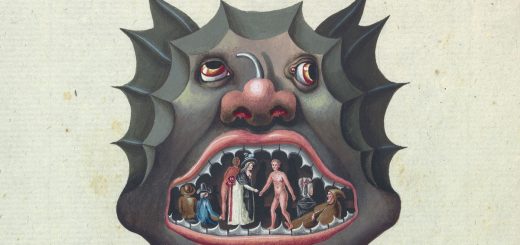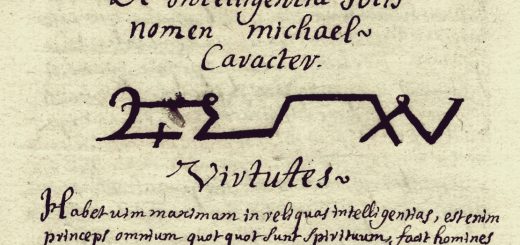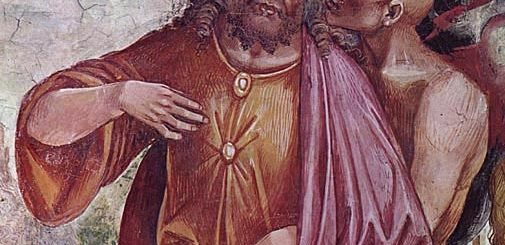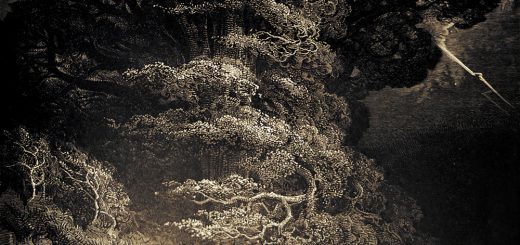Witch bottles for warding off evil and curses
Witch bottles were originally created for Apotropaic magic (protection or defense magic) and began as countermagical devices used as protection against other witchcraft and black magical attacks. Apotropaic magic has always been one of the most used and most important kinds of magic. The term apotropaic comes from the Greek αποτρέπειν “to ward off” from από– “away” and τρέπειν “to turn”. Is is always used to ward off harmful or evil influences, to deflect misfortune, break a curse or to avert the evil eye. The ancient Greeks made offerings to the “averting gods” (ἀποτρόπαιοι θεοί, apotropaioi theoi), chthonic deities and heroes who granted safety and repel evil and bad luck. Witchbottles are described in historical sources in England and the United States.
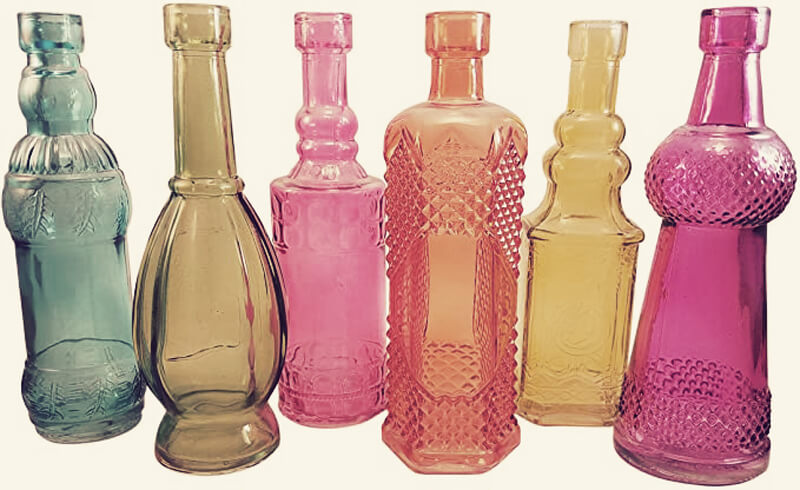
In the 17th century especially the so called Bartmann jugs were deployed as witch bottles. A Bartmann jug (from German Bartmann, “bearded man”), also called Bellarmine jug or “Greybeard”, is a type of decorated salt-glazed stoneware that was manufactured in Europe throughout the 16th and 17th centuries, especially in the Cologne region. Bellarmines were named after a particularly fearsome Catholic Inquisitor, Robert Bellarmine, who persecuted Protestants and was instrumental in the burning of Giordano Bruno. As witch bottles they were filled with various objects such as human urine, hair and magical charms, which were believed to benefit their owners or harm their enemies.
Bottles with malevolent-looking face masks, typical of the period, were routinely chosen for this very purpose. Where the 16th century Bartmann jugs show flower and oakleaf motivs, the 17th century jugs usually show a bearded figure or a wild man (woodwose). The first mention of a witch bottle appears in the 17th century England. One of the earliest descriptions of a witch bottle in Suffolk, England, appears in 1681 in Joseph Glanvill’s Saducismus Triumphatus, or Evidence concerning Witches and Apparitions:

Joseph Glanvill by William Faithorne, print,published 1681
– For an old Man that Travelled up and down the Country, and had some acquaintance at that house, calling in and asking the Man of the house how he did and his Wife; He told him that himself was well, but his Wife had been a long time in a languishing condition, and that she was haunted with a thing in the shape of a Bird that would flurr near to her face, and that she could not enjoy her natural rest well. The Old Man bid him and his Wife be of good courage. It was but a dead Spright, he said, and he would put him in a course to rid his Wife of this languishment and trouble, He therefore advised him to take a Bottle, and put his Wives Urine into it, together with Pins and Needles and Nails, and Cork them up and set the Bottle to the Fire well corkt, which when it had felt a while the heat of the Fire began to move and joggle a little, but he for sureness took the Fire shovel, and held it hard upon the Cork, And as he thought, he felt something one while on this side, another while on that, shove the Fire shovel off, which he still quickly put on Again, but at last at one shoving the Cork bounced out, and the Urine, Pins, Nails and Needles all flew up, and gave a report like a Pistol, and his Wife continued in the same trouble and languishment still. Not long after, the Old Man came to the house again, and inquired of the Man of the house how his Wife did. Who answered, as ill as ever, if not worse. He askt him if he had followed his direction. Yes, says he, and told him the event as is above said. Ha, quoth he, it seems it was too nimble for you. But now I will put you in a way that will make the business sure. Take your Wive’s Urine as before, and Cork, it in a Bottle with Nails, Pins and Needles, and bury it in the Earth; and that will do the feat. The Man did accordingly. And his Wife began to mend sensibly and in a competent time was finely well recovered; But there came a Woman from a Town some miles off to their house, with a lamentable Out-cry, that they had killed her Husband. They askt her what she meant and thought her distracted, telling her they knew neither her nor her Husband. Yes, saith she, you have killed my Husband, he told me so on his Death-bed. But at last they understood by her, that her Husband was a Wizard, and had bewitched this Mans Wife and that this Counter-practice prescribed by the Old Man, which saved the Mans Wife from languishment, was the death of that Wizard that had bewitched her.
Witch bottle ingredients
Later witch bottles were made from glass bottles, small glass vials, and a variety of other containers. Since the early modern period it has been a common custom to hide objects such as written charms, dried cats, horse skulls, concealed shoes, and witch bottles in the structure of a building.
Witches or folk healers – often addressed to as cunning folk – would prepare the witch bottle for a customer. Historically, the witch’s bottle contained the victim’s (the person who believed they had a spell put on them, for example) urine, hair or nail clippings, or red thread from sprite traps.
Later witch bottles were filled with rosemary, needles and pins, and red wine. Historically and currently, the bottle is then buried at the farthest corner of the property, beneath the house hearth, or placed in an inconspicuous spot in the house. It is believed that after being buried, the bottle captures evil which is impaled on the pins and needles, drowned by the wine, and sent away by the rosemary. Sometimes sea water or earth are used instead. Other types of witch bottles may contain sand, stones, knotted threads, feathers, shells, herbs, flowers, salt, vinegar, oil, coins, or ashes. A similar magical device is the “lemon and pins” charm.
Exploding witch bottles

hoodoo spell jar
Another variation is within the disposal of the bottle. Some witch’s bottles were thrown into a fire and when they exploded, the spell was broken or the witch supposedly killed. This however seems to be an exception on the rule.
Usually the witch bottle was believed to be active as long as the bottle remained hidden and unbroken. People did go through a lot of trouble in hiding their witch bottles – those buried underneath fireplaces have been found only after the rest of the building has been torn down or otherwise disappeared. The origins of this tradition have been dated at least to the 16th century. In ancient times the bottles were made of stone and originally contained rusty nails, urine, thorns, hair, menstrual blood, and pieces of glass, wood, and bone.
The witch bottle in Elizabethan England
Witch bottles were popular in Elizabethan England – especially East Anglia, where folk beliefs and a fear for witches were strong. The bottles were also most often buried under the fireplace, under the floor, or plastered inside walls. In 2016 a glass bottle found buried in the threshold of a man’s house was featured in an episode of Antiques Roadshow filmed in Trelissick, Cornwall; glass specialist Andy McConnell tasted a small amount of the contents theorizing it was possibly port or wine though he did note the rusty flavour and the presence of nails, a later episode in 2019 then revealed the contents had been analyzed by Loughborough University that identified it actually contained “urine, a tiny bit of alcohol, and one human hair” alongside some brass pins dating from the late 1840s and an ostracod. It was theorised to be a witch bottle.
The witch bottle and hoodoo spell bottle in America

bottle devoted to Yemaja
To date, less than a dozen possible witch bottles have been identified in the United States. Archaeologist Marshall Becker was the first to identify an American witch bottle in an archaeological context. Known as the Essington witch bottle, the artifact was recovered during excavations on Great Tinicum Island in Delaware County, Pennsylvania. A mid-19th to early 20th-century slave or tenant site in Dorchester County, Maryland yielded a buried witch bottle whose cork stopper was bristling with straight pins. In 2016, a bottle filled with nails was excavated from the hearth of a Civil War site in Virginia and appears to be a witch bottle. Hoodoo spell bottles, often filled with iron nails, served as amulets of protection for African American slaves.
Latin American amulet bottles
Amulet bottles or magic bottles made in South and Central America are created to invoke the help of spirits and saints in magical operations.
They can be filled with herbs, talismans, written prayers, small icons, and more. Often, in addition to the amulets and charms inside, such bottles are filled with congruent magical oils and kept on the altar.
Honey jars and vinegar bottles
Honey jar and vinegar bottle spells are part of the black and African-diasporic magical traditions. Honey jar spells are some of the most popular examples of container spells in modern magic. They are also referred to as sweetening spells and are usually used to change a person or situation in the user’s favor, such as love spells, spells to gain favor with a prospective employer, etc.
Despite their name, these jars were made with various types of sugar, syrup, molasses, and other sweeteners in addition to honey. Honey jars are often created to attract success business and for money magic.
As sour is opposed to sweet, vinegar bottle spells are used to sour a situation. The oldest examples of these spells were meant to drive a couple apart by sowing discord between them, and they were made using very specific curios (in specific numbers) that were then soaked in household or magical vinegar and sealed.
Congolese bottle trees
Bottle trees were used in the Congo and we also find them in the southern United States. The creation of bottle trees began in the 9th century in central Africa as a means of warding off evil spirits, who were supposedly trapped in the bottles if they got too close to the tree. This custom was carried on in the United States by those brought to the South as slaves. They are still made and used in the southern states and Appalachia.

Witch bottle usede in the American Civil War; probable by slaves for protection.
The theurgic witch bottle in modern magical practice
A witch bottle can also be made as a theurgic magnet to attract a certain type of spirit, deamon, angel or class of spirits. A bottle can be filled with ingredients which the Greeks classified as the symbola and sumtomata belonging to the seira of a deity or spirit. In fact this kind of witch bottle functions as a portable altar. Very important is not only the content, but also the color of the glass in congruence with the planet under which the ritual falls :
• for Sun use yellow or yellowish orange
• for Moon use white, clear, mint green or silver
• for Mercury use orange
• for Venus use green, pale blue or pink
• for Mars use red or brownish red
• for Jupiter use purple or deep blue
• for Saturn use gray or black or very dark indigo
• for Uranus use cobalt green or fluorescent vertical yellow and black stripes or electric blue or violet
• for Neptune use sea green or blue green
• for Pluto and chthonic deities like Plouton use deep scarlet or morose red or black
The ingredients should also be congruent within the seira or psychospheric attribute gamma of a planet. For example a bottle devoted to Mars-entities could be filled with piman (rum with chilly peppers soaked in it), iron nails, needles and pins, the root of the stinging nettle, a red ribbon, etc..
A bottle to attract Venus-entities could be filled with rose water, a sweet liquor or sweet wine, honey, the feather of a pigeon, pink, rose or light blue ribbons, pieces of rose quartz, sexual fluids, etc.
These kind of theurgic bottles should not be kept in one box but kept apart, preferable together with a picture of San Cipriano / Saint Cyprian. On the bottles one could glue a label with a picture of the planet-entity, if available, the bottle is devoted to. The bottles can be covered with silk cloth when not in use or left in sight if some energy has to be balanced by its counterpart. One should use bottles with a removable cap or cork, so that the bottle can be sealed of, but also used as a candle holder to burn a corresponding candle.
These kind of witch bottles are very useful for catalyzing ritual magic, performed by people with little space, without a garden etc., as they take not much room. One should guard the freshness of the contents, if they are liable to corruption. As soon as the content of a bottle starts to exhibit decomposing symptoms, the demonic side of the specific planet entities are drawn towards such a bottle. One should remember that more angelic beings are mostly working anabolic, while demonic forces are working catabolic. So is not used professionally, a bottle could become an attractor of destructive entities. Check the bottle regularly by opening it!
Recipe for a simple witch bottle to ward off evil
A simple and cheap, but according to modern magicians very effective form of apotropaic magic, especially when all other methods seem to fail is the a protective witch bottle, which hardly differs from the classic one. It is made to absorb a curse, ward off evil energies or entities and to serve as a lightning rod for bad luck and bad energy in general an can be made, using this recipe:
Take a bottle with metal closure, which you later seal with candle wax. Fill it with only broken things. Especially lots of shards of broken dishes, flower pots, 5 or a multiple of 5 of iron nails that have to be crooked, thorns of thorny bushes, and the like.
Fill the bottle with wine, vinegar, urine or water or mixtures thereof. Close and bury the bottle, or put it somewhere inconspicuous if burial is not possible. The logic behind this is sympathetic magic: evil destructive energy is attracted to broken chaotic things, such as those here held together in a concentrated bottle.
You may also like to read:
Walpurgis Night
Jack o lantern
The Banshee
Black Cat Superstitions
An Authenticated Vampire Story
Mysteries of the Ancient Oaks
The Imp or Witche’s familiar
The Witche’s Ointment
Spirit beings in european folklore



